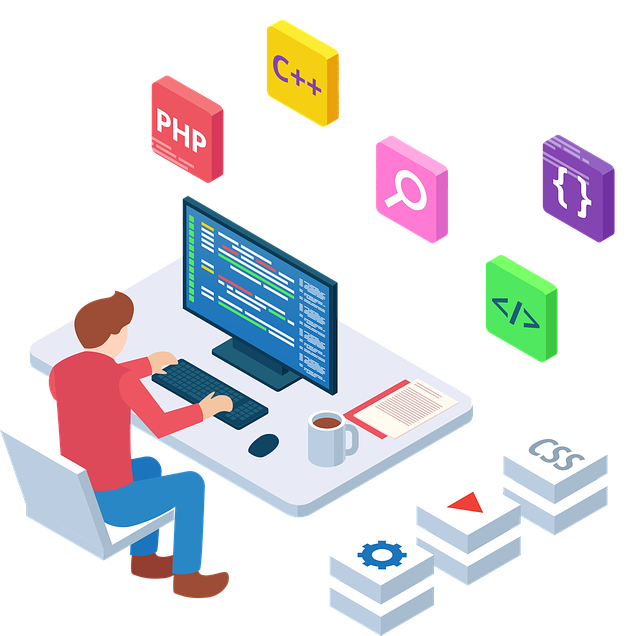What is low-code development and why is it important? Low-code and no-code web design is the newest game-changer in the IT world. It is helping to bridge the gap between less-efficient developers and full-fledged developers. Several web development company across the world is diving into this hype, low-code and no-code website building platforms to make websites in half the time and invest a lot less money. At Consumer Sketch, we are bringing the renaissance of design-first platforms to offer our customers new features, solutions.
Explaining Low-code and No-code Design First Platform
What is the difference between low code and no code? The visual approach specified for web development is called low-code and no-code web design. It is done in the lowest time with the help of automation nearly every step of the way. There are two areas of low-code and no-code web design: one, design first platforms which emphasize the visual look of applications across all devices.
Benefits of going with low-code and no-code development
1. Lost-cost development: The average salary of a web developer is $108,000. By using low-code and no-code web design, companies are saving money by hiring fewer developers while making a lot more money in a quicker time.
2. Quick development: These design-first platforms are straightforward, use the latest innovation and solutions without having to code. This leads to a reduction of web development by 90%.
3. Business agility: everyday new start-up are coming with the latest technology to give hard competition shaking the market condition. In these ever-changing market conditions, companies need website building platforms that are agile and quick to respond to problems and solutions to withstand competition.
4. Legacy systems: Most of the legacy systems are expensive and hard to maintain. This leads to a slower process of web development. In times like this, companies need quick service to avoid obstruction.
5. Breaking boundaries: Due to design-first platforms, web development is not the corner of the IT department. They are breaking boundaries and bringing in collaboration to reduce the stress of IT staff.
Platforms for low-code & no-code
- Appian
- DWKit
- Google Appsheet
- Microsoft Powerapps
- Looker 7
- Mendix
- Zoho Creator
- Yellowfin 9
- Skyve Foundry
- Sisense

Platform vendors for no-code web design:
- AppGyver
- Appsheet
- Airtable
- Betty Blocks
- Shopify
- Quickbase
- Stripe
- Pay Here
- Notion
- Nintex
- Kissflow
- Gumroad
- Glide
- Carrd
- Bubble
5 Challenges of low-code design platform
1. Business logic problem: Nowadays, low-code web development platforms use to access and allowance by default to simplify the process for non-developers. When the platforms become effective, customers can do more things with them, even get access to other customers’ data. This is a big security crunch.
2. Lack of flexibility and customization: This problem is addressed by those who tried one design-first platform, and thought that others are bad as well. While one platform may provide customization, the other may not. So choose platforms that suit your businesses’ needs.
3. Extensive training: Employees need to be extensively trained for a longer period to be specialized in a specific platform. This can be expensive for companies.
4. Limitation: These design-first platforms offer rigid templates to meet a set of use cases. But if you think of some out-of-the-box idea that will help your business, you can’t make such templates here. This limits your experience of web development.
5. Require developers for further detailed programming: For simple things, you can use non-developer to develop applications without even coding. But as customer requirements increase, the web development company will need experienced developers to get the job done.
What can you build with low-code & no-code
You can be amazed at what you can do with low-code and no-code web design platforms. With the help of the Bubble platform, you can create almost everything such as social media platforms, hotel booking applications, SaaS applications, APIs, etc. Some LCAPS provide drag and drop builders to create Javascript functions and sophisticated user flow.
Will low-code replace developers
LCAPs won’t replace developers but surely will change the system and tools engineering system build. By 2023 50% of the companies will use low-cost platforms, and even AL-machine technology will merge with LCAP. With this integration, highly complex enterprise applications will be built for better security and automated up-gradation for device compatibility.
So, the workload of developers will definitely be decreased but they will not be replaced, as it seems. It can be foreseen that companies will provide tools to customers in the future to create their own applications to meet their demands. While we need web developers to bring out innovations and solutions, Low-code limits our experience, even those powered by Als.
What is the future of low-code-based platforms?
While experts predict that low-cost and no-cost web design platforms will rise high in the future but will not completely diminish the need for experienced developers.
According to Brandessence Market Research, this design-first platforms market will be worth $65.15 Billion in 2027 and $187 by 2030. The industry rulers like Microsoft, Appian, Oracle, Salesforce, etc, have already delved into this design-first market and continue to bring innovation to impress customers with customizations.
Currently, low-code platforms are used for business processes and workflow applications, service-providing applications, web, and mobile front ends. Employee contract tracing apps are being developed in 50% of the usual time required to develop during this endemic. In the future, Low-Code Application Platforms (LCAP) will be used for reengineering technology and ecosystems.
Conclusion
Low-code and no-code web design are the new future trends. While investing less money, web design companies get applications within a shorter span of time to sustain in this volatile market and to compete. At Consumer-Sketch.com, we use LCAPa to provide web design services in the quickest time on a limited budget. For free quotes or information, join our website.
LCAPs are making the right noise for the right reasons. It makes building apps more accessible which can be helpful for entrepreneurs will little to nothing capital but a big dream to succeed.
Join hands with Consumer Sketch, a leading website design and mobile application development company to get innovation and satisfaction in a shorter time.








